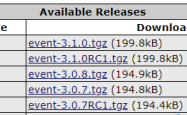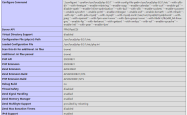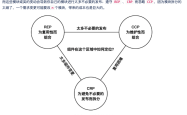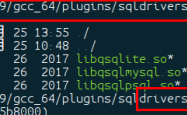Laravel5.1 框架登录和注册实现方法详解
本文实例讲述了Laravel5.1 框架登录和注册实现方法。分享给大家供大家参考,具体如下:
关于登录和注册 Laravel自带了一套组件实现了这一功能,我们只需要实现简单的视图即可。
AuthController是专门管理用户注册和登录的。
PassWordController是重置密码用的,今天暂不做记录。
1 配置
我们可以在 config/auth.php 文件中进行用户认证的配置:
?| 1 2 3 4 5 6 7 8 9 10 11 12 13 14 15 16 17 18 19 20 21 22 23 24 25 26 27 28 29 30 31 32 33 34 35 36 37 38 39 40 41 42 43 44 45 46 47 48 49 50 51 52 53 54 55 56 57 | <?php return [ /* |-------------------------------------------------------------------------- | Default Authentication Driver |-------------------------------------------------------------------------- | | This option controls the authentication driver that will be utilized. | This driver manages the retrieval and authentication of the users | attempting to get access to protected areas of your application. | | Supported: "database", "eloquent" | */ 'driver' => 'eloquent' , /* |-------------------------------------------------------------------------- | Authentication Model |-------------------------------------------------------------------------- | | When using the "Eloquent" authentication driver, we need to know which | Eloquent model should be used to retrieve your users. Of course, it | is often just the "User" model but you may use whatever you like. | */ 'model' => App\User:: class , /* |-------------------------------------------------------------------------- | Authentication Table |-------------------------------------------------------------------------- | | When using the "Database" authentication driver, we need to know which | table should be used to retrieve your users. We have chosen a basic | default value but you may easily change it to any table you like. | */ 'table' => 'users' , /* |-------------------------------------------------------------------------- | Password Reset Settings |-------------------------------------------------------------------------- | | Here you may set the options for resetting passwords including the view | that is your password reset e-mail. You can also set the name of the | table that maintains all of the reset tokens for your application. | | The expire time is the number of minutes that the reset token should be | considered valid. This security feature keeps tokens short-lived so | they have less time to be guessed. You may change this as needed. | */ 'password' => [ 'email' => 'emails.password' , 'table' => 'password_resets' , 'expire' => 60, ], ]; |
这是默认的配置,注释写的很清楚了 如果有特别需要可以做更改,一般情况中我们使用默认的就OK。
2 创建路由
?| 1 2 3 4 5 6 7 8 9 10 11 12 13 14 15 16 | /** * 用户认证 */ // getLogin 用于展示登录表单。 Route::get( '/auth/login' , 'Auth\AuthController@getLogin' ); // postLogin 用于提交用户登录数据。 Route::post( '/auth/login' , 'Auth\AuthController@postLogin' ); // getLogout 用于退出登录。 Route::get( '/auth/logout' , 'Auth\AuthController@getLogout' ); /** * 用户注册 */ // getRegister 用于展示注册表单。 Route::get( '/auth/register' , 'Auth\AuthController@getRegister' ); // postRegister 用于提交用户注册数据。 Route::post( '/auth/register' , 'Auth\AuthController@postRegister' ); |
3 注册实现
3.1 编写视图
注册视图的路径必须放在 views/auth/ 目录中 并命名为 register.blade.php。
?| 1 2 3 4 5 6 7 8 9 10 11 12 13 14 15 16 17 18 19 20 21 22 23 24 25 26 27 28 29 30 31 32 33 34 35 36 37 38 39 40 41 42 43 44 45 46 47 48 49 50 51 52 53 | <!DOCTYPE html> <html> <head> <meta charset= "utf-8" > <title>用户注册</title> <link rel= "stylesheet" href= "//maxcdn.bootstrapcdn.com/bootstrap/3.3.4/css/bootstrap.min.css" rel= "external nofollow" rel= "external nofollow" > </head> <body> <div class = "container" > <div class = "row" > <div class = "col-md-8 col-md-offset-2" > <div class = "panel panel-default" > <div class = "panel-heading" >Register</div> <div class = "panel-body" > <form action= "{{ url('/auth/register') }}" method= "post" role= "form" class = "form-horizontal" > <input type= "hidden" name= "_token" value= "{{ csrf_token() }}" > <div class = "form-group" > <label class = "col-md-4 control-label" >用户名:</label> <div class = "col-md-6" > <input type= "text" name= "name" class = "form-control" autofocus> </div> </div> <div class = "form-group" > <label class = "col-md-4 control-label" >邮箱:</label> <div class = "col-md-6" > <input type= "email" name= "email" class = "form-control" > </div> </div> <div class = "form-group" > <label class = "col-md-4 control-label" >密码:</label> <div class = "col-md-6" > <input type= "password" name= "password" class = "form-control" > </div> </div> <div class = "form-group" > <label class = "col-md-4 control-label" >确认密码:</label> <div class = "col-md-6" > <input type= "password" name= "password_confirmation" class = "form-control" > </div> </div> <div class = "form-group" > <div class = "col-md-offset-4 col-md-8" > <button type= "submit" class = "btn btn-primary" >注册</button> </div> </div> </form> </div> </div> </div> </div> </div> </body> </html> |
3.2 修改跳转URL
注册后跳转的URL有时候不是我们想要的,你可以自定义跳转路由,在AuthController中添加即可:
?| 1 | protected $redirectPath = '/' ; |
4 登录实现
我们注册后已经有了用户了 现在可以试试登录的实现了。
4.1 编写视图
登录的视图路径也是有规定的:views/auth/ 然后命名为:login.balde.php
?| 1 2 3 4 5 6 7 8 9 10 11 12 13 14 15 16 17 18 19 20 21 22 23 24 25 26 27 28 29 30 31 32 33 34 35 36 37 38 39 40 41 | <!DOCTYPE html> <html> <head> <meta charset= "utf-8" > <title>用户登录</title> <link rel= "stylesheet" href= "//maxcdn.bootstrapcdn.com/bootstrap/3.3.4/css/bootstrap.min.css" rel= "external nofollow" rel= "external nofollow" > </head> <body> <div class = "container" > <div class = "row" > <div class = "col-md-8 col-md-offset-2" > <div class = "panel panel-default" > <div class = "panel-heading" >Login</div> <div class = "panel-body" > <form action= "{{ url('/auth/login') }}" method= "post" role= "form" class = "form-horizontal" > <input type= "hidden" name= "_token" value= "{{ csrf_token() }}" > <div class = "form-group" > <label class = "col-md-4 control-label" >邮箱:</label> <div class = "col-md-6" > <input type= "email" name= "email" class = "form-control" > </div> </div> <div class = "form-group" > <label class = "col-md-4 control-label" >密码:</label> <div class = "col-md-6" > <input type= "password" name= "password" class = "form-control" > </div> </div> <div class = "form-group" > <div class = "col-md-offset-4 col-md-8" > <button type= "submit" class = "btn btn-primary" >登录</button> </div> </div> </form> </div> </div> </div> </div> </div> </body> </html> |
4.2 登录后跳转
登录后的跳转跟注册后的跳转是一样的:
?| 1 | protected $redirectPath = '/' ; |
4.3 登录失败跳转
当登录失败了Laravel会默认跳转回 auth/login 路由,这也是可以自定义的:
?| 1 | protected $loginPath = '/error' ; |
4.4 修改登录用户名
默认的登陆用户名是邮箱,我们可以在AuthController中自定义:
?| 1 2 | // 该属性默认为email,改成name是以用户名作为账号类型登录。 protected $username = 'name' ; |
4.5 查看用户信息
我们可以通过Auth门面的方法来访问已经登录进来的用户:
?| 1 | Auth::user() |
4.6 检查用户是否登录
?| 1 2 3 | if (Auth::check()) { // 这个用户已经登录... } |
4.7 用于登录失败次数限制
Laravel支持这种逻辑,我们只需要在AuthController中引入 ThrottlesLogins 这个trait 即可。一分钟内登录5次都不成功就会锁闭一分钟,它是基于 用户名/邮箱和IP地址的。
5 登出用户
我们只需要访问 /auth/logout 就可以登出用户了,当然还有一个方法 就是Auth门面方法:
?| 1 | Auth::logout(); |
希望本文所述对大家基于Laravel框架的PHP程序设计有所帮助。
原文链接:https://www.cnblogs.com/sun-kang/p/7604829.html
1.本站遵循行业规范,任何转载的稿件都会明确标注作者和来源;2.本站的原创文章,请转载时务必注明文章作者和来源,不尊重原创的行为我们将追究责任;3.作者投稿可能会经我们编辑修改或补充。










